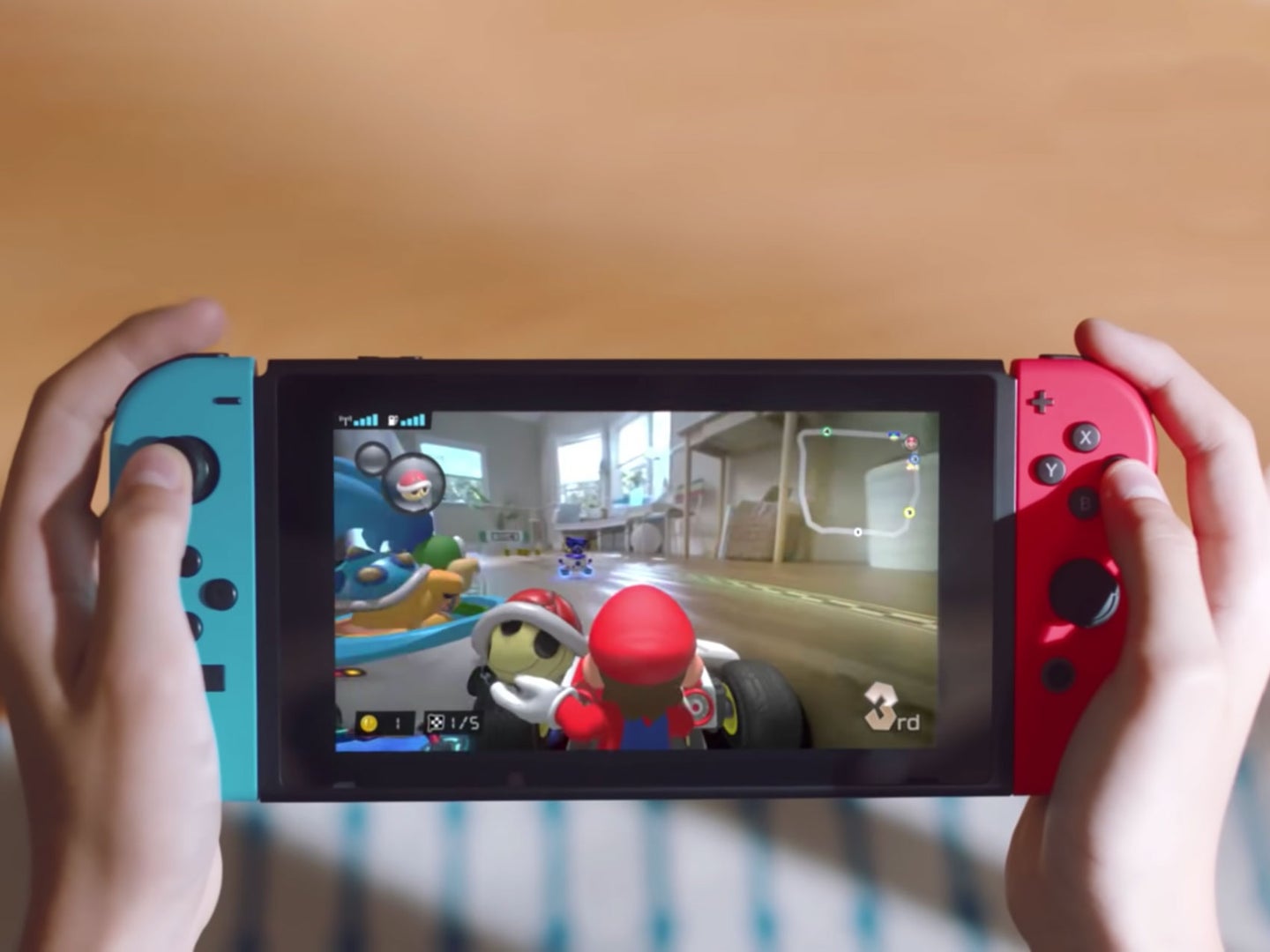The next Mario Kart game for the Switch involves an actual vehicle zooming around your living room
Cameras mounted on the vehicles turn your living space into the Mushroom Kingdom through augmented reality.

We may earn revenue from the products available on this page and participate in affiliate programs. Learn more ›
Nintendo could slap some cheap Mario Kart branding on just about anything and make millions of dollars with it. It’s a beloved franchise that has been entertaining gamers and occasionally ruining friendships with well-timed red shells since 1992. For the game’s latest installment, however, Nintendo has taken a technological leap and turned its adorable carting game into a full-on augmented reality experience. And so far, it looks very promising.
The upcoming $99 Mario Kart Live: Home Circuit ships with a physical toy cart—you can choose either Mario or Luigi—that connects wirelessly to a Switch console. Each vehicle has a rechargeable battery inside and a camera mounted to the top. A series of physical gates that come in the box allow players to lay out a track on the floor.

During the race, the camera pumps a live feed of the video to the Switch screen with digital objects (enemies, obstacles, bonus blocks) overlaid onto it. The resulting experience looks like a typical game of Mario Kart, except your own living space is the map. You can stage epic lap races around the dog bed, or plan out more elaborate routes that run the perimeter of a room.
This isn’t a new concept by any means. DJI’s Robomaster S1 robot provided a similar racing mode—as well as several battle games that took advantage of the device’s built-in tank turret. The S1 cost more than $500 retail, however, and didn’t link up with a simple console.
In Mario Kart Live, the cars will be able to interact with one another during the races—if a shell hits your cart in the game, the physical toy vehicle will react accordingly. We’ve seen this kind of tech before from other companies, the most notable of which was called Anki (RIP).
Tim Cook introduced Anki to the world back at WWDC 2013. The fledgling startup showed off a product called Drive (it later became Overdrive), which included a set of toy cars that drove around a flat track on the floor. Each car connected to an iOS device via Bluetooth LE, where AI-driven algorithms helped determine their path as well as their interactions. If you wanted several cars to try and block one specific vehicle, for example, they could do so using real-time calculations rather than choreographed patterns.

Anki was different in some key ways, however. Overdrive required players to lay out a physical track that snapped together with magnets instead of simply placing down checkpoints and letting vehicles drive on the floor as they do with Mario Kart Live. The Anki vehicles also lacked cameras, so you could have controls on the smartphone screen to perform actions, but you had to watch the physical cars move around the track at all times to see the action.
Anki shut down operations back in 2019, but other companies have tried to add AR to toy car racing. In 2018, Hot Wheels introduced its Augmoto racing platform, which used a device’s camera to add digital effects to races happening on a physical track. The experience was inconsistent, however, and sometimes downright frustrating when the AR tech stumbled and players felt like they were left playing with $120 Hot Wheels cars.
When Mario Kart Live: Home Circuit launches on October 16th, it won’t replace the typical Mario Kart experience. If it delivers on the promises made by the announcement trailer, however, it could be another simple way to introduce players to the presently scattered world of AR gaming. Nintendo has already enjoyed success with its Labo system of cardboard controller projects. Chances are, there will be many little Marios and Luigis screaming around living room floors during this holiday season.
